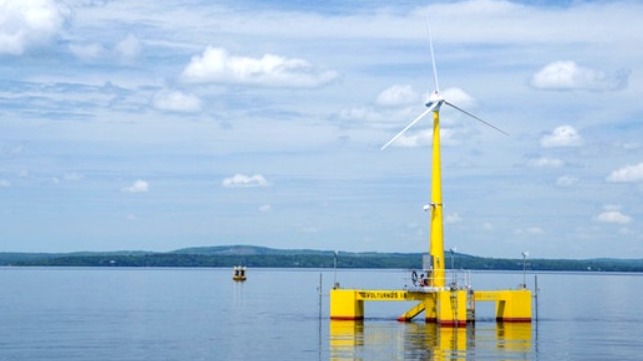Gulf of Maine Offshore Wind Potential Highlighted in DNV Study

DNV recently completed a series of studies designed to help the state of Maine develop the critical pathways for its offshore wind industry. The initiative was launched in June 2019 to outline a clear roadmap to develop floating offshore wind in the Gulf of Maine, while ensuring balance with Maine’s maritime industries and environment.
The U.S. Department of the Interior through the Bureau of Ocean Energy Management has been actively targeting the Gulf of Maine as one of the future areas for the development of the offshore wind industry. According to BOEM’s leasing strategy announced in 2021, they are targeting the first lease auctions for the Gulf of Maine in 2024.
Maine has an abundant coastline and some of the highest average wind speeds in the United States, which makes it a strong candidate for offshore wind development. However, according to DNV, project development is more complex than other areas already underway on the East Coast, because of the Gulf of Maine’s water depths and its status as a primary economic driver for the state. State officials, including the governor, have expressed concern over the potential impact on the fishing industry and tourism, which are two of the state’s largest industries.
The U.S. Economic Development Administration (EDA) awarded a $2.166 million grant in 2020 to the State of Maine’s Governor’s Energy Office to advance the offshore wind industry through the development of a comprehensive industry roadmap. DNV was selected through a competitive bidding process to develop a series of technical, socio-economic, and strategy advisory studies to inform the state’s roadmap.
Broadly, DNV projects that offshore wind will rise from eight percent of total wind production in 2020 to 34 percent in 2050, totaling almost 2000 GW. Floating wind, which is expected to be the primary resource for the Gulf of Maine, is expected to represent about six percent of the power generated globally from the offshore wind industry with a total installed capacity potential for 300 GW.
“Offshore wind is an important component to transition to a decarbonized energy industry, and the roadmap prepared by DNV and others will help the State of Maine to build a dynamic and equitable offshore wind industry,” said Richard S. Barnes, region president, Energy Systems North America for DNV. “Floating wind is in its earliest stages and has not yet reached commercialization. This initiative provides the State of Maine, as well as other areas where fixed-bottom wind turbines are not feasible, an opportunity to be a global leader in the development of the market and the technology.”
DNV’s analysis of the industry’s potential in Maine revealed that the benefits of the offshore wind industry to the state are substantial. However, they anticipate that no large-scale wind farms will be operational in the near term. In the majority of DNV’s scenarios, offshore wind capacity in the Gulf of Maine will accelerate only after 2040.
In addition to the potential to generate significant amounts of electric power from offshore wind, DNV identifies the potential for a strong economic benefit to the state. They project the potential to create up to 33,000 jobs during the construction phase and up to 13,000 long-term jobs from the ongoing operation of the wind farms. They estimate the potential for $2 billion in wages to be generated from the offshore wind industry.
“While the development of offshore wind in the State of Maine demonstrates a potential for clear benefits such as job development and health, stakeholders are concerned about negative consequences to the industries and communities that rely on the ocean,” DNV writes. “There is a risk of displacement from harvest areas for fishermen and lobstermen, which can be problematic due to the strong social convention of harvesting only in specific areas that have often been negotiated over generations. The tourism industry could be affected by the perception that visible wind turbines would mar the scenery and ‘untouched’ feel of the coast.”
The roadmap set forth by DNV and other organizations identifies some solutions, including continued proactive communication with affected communities, and also recommends further research as lease areas and project development is more certain.
BOEM has been moving forward with the early stages of its planning efforts for the Gulf of Maine. In the spring of 2022, they released an initial report broadly defining a planning area consisting of 13.7 million acres in the Gulf of Maine and released an initial request for interest that ran to October 2022. Through consultations and a review of comments it is anticipated that the areas will be significantly reduced as the process moves forward.
A university-led project is already studying the Gulf of Maine’s offshore wind potential and developed a design for floating wind turbines. After testing near shore, the project filed for a research permit. BOEM in January reported that it has determined that there was no competitive interest for the research lease and as a next step toward awarding the license would be initiating an environmental review of potential impacts from offshore wind leasing activities associated with the research lease.
